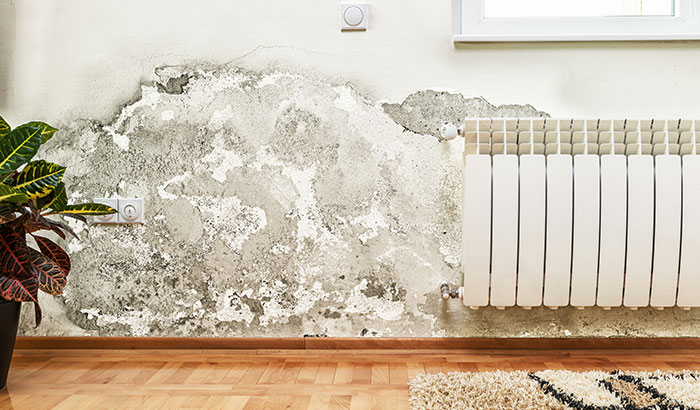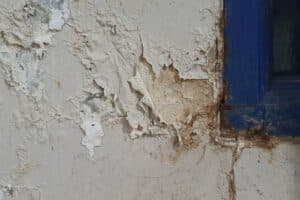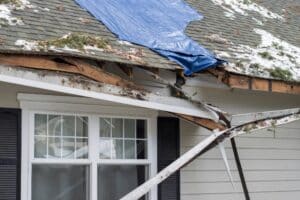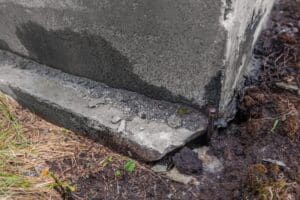After years of study, the long-term effects of mold are being discovered, and it’s not good news.
Various scientific and government organizations have investigated the effect of mold on the health of humans and have discovered that there are significant short-term and long-term health risks to consider about mold exposure.
Conditions for Mold and Mold Exposure
Mold is a unique organism as different from plants as much as we – humans – are different from micro bacteria. Oh, also, it’s literally everywhere.
Mold and other fungi are everywhere. They are in our food, our clothes, and even the air we breathe. The reason we don’t notice them is that they need specific conditions to flourish.
For example, mold lives in bread. No airtight container can “keep it out” because it’s already there. After sitting in the warm and moist environment of your bread long enough, the mold spores are able to grow and multiply enough to become visible.
What made it possible for the mold to grow and expand? The warm and moist environment it landed on.
Once mold begins to grow, it throws out millions of spores that drift in the air until they land on a suitable host. From there, they just need to wait for the right conditions to begin forming.
How Mold Grows in Homes
Most homes are safe from mold growth.
There are circumstances where mold can easily grow. Areas where water frequently condenses on cold surfaces, like on your pipes, cooling devices, and the areas near humidifiers, are at risk for mold growth.
Mold can grow on almost any surface if the humidity is high enough. Homes that maintain a humidity level of 70% or above for frequent stretches of time will almost definitely see mold growth.
Short-term Effects of Mold
Although this article is more specific to the long-term effects of mold, it is prudent to recognize the short-term effects and how they can harm health if exposure continues.
Short-term symptoms of mold growth can include:
- Coughing
- Sneezing
- Runny nose
- Nasal congestion
- Skin irritation
- Eye irritation
- Trouble breathing
For individuals with mold allergies, both mild and severe, these symptoms are often more severe.
Long-term Health Effects of Mold Exposure
Individuals exposed to mold for long periods of time (up to two and a half years) reported having the following recurring symptoms:
- Fatigue
- Respiratory Problems
- Recurring Bloody noses
- Nausea
- Frequent sore throats
- Headaches
- Congestion
- Lung infections
- Chronic cough
- Bronchitis
- Skin rashes
These are just the symptoms reported by people exposed to mold. Clinical testing discovered that mold exposure had a significant impact on brain function as well.
Mold exposure was said to decrease physical speed and response times. People exposed to mold for long periods of time performed poorer in finger-tapping motor speed tests. Mold exposure reduced the rate at which they could physically function.
There were other mental impairments that afflicted a person’s ability to think. When people with high mold exposure were tested for cognitive impairment, doctors discovered that the following were all impaired:
- Verbal learning and comprehension: The ability that people have to comprehend and remember things spoken to them. This can make it hard for students to learn, workers to understand instructions, or people generally not being able to remember conversations with loved ones.
- Spatial learning abilities: Our ability to remember directions and locations is stored in our spatial memory. Mold exposure makes it more difficult to learn new locations and routes.
- Visuospatial memory: Most individuals are capable of seeing objects in their minds. When asked to picture a table, they can remember what tables look like or make an approximation of one. Those who have a visuospatial impairment are not able to conjure up a mental image as easily, if at all.
The amount of permanent damage mold can cause to your health depends on your exposure and physical health leading up to that time.
You can recover from small exposures after a few days. Longer exposures may take weeks, months, or even years to recover from. In a few cases, as will be discussed later, the damage can be permanent.
Respiratory Issues in Children
The most significant health risk from mold exposure is related to our respiratory health – our very ability to breathe.
As mentioned previously, mold can irritate individuals with respiratory illnesses such as asthma. Respiratory problems for individuals without a chronic illness are still common. Healthy individuals without allergies can still experience discomfort in breathing, tightness of the chest, and coughing.
Children are prone to long-term damage if they are raised in a home with mold problems.
A child’s lungs are in a constant state of development and do not fully mature until early adulthood. When exposed to environments or circumstances that can irritate the lungs, the disturbance may temporarily or permanently damage the lungs and airways.
Mold spores can contribute to lung irritation leading to a lifelong infliction of asthma and other respiratory problems. In fact, living in a damp or mold-infested environment can increase the chance of asthma-related issues by 30% to 80%.
Mental Health and Mold Exposure
A loose but not unrelated connection exists between mold exposure and depression.
Prolonged exposure to mold can increase the likelihood of developing depression. The connection is not entirely clear. Whether increased exposure to mold can negatively impact your emotional well-being is still being researched.
Individuals tested for mental impairment from mold exposure also tested high for symptoms of depression. While some symptoms of those with depression may be similar to the long-term effects of mold exposure, there is a distinct enough difference to conclude that they are uniquely caused by mold.
Mold exposure may amplify feelings of depression in other ways. Bad health can lead to discouragement and depressive thoughts. So, existing conditions of depression can worsen as mold exposure continues.
Clean Up Mold With Black Diamond Water Damage and Disaster Restoration
Mold flourishes in the aftermath of water-related disasters. That’s why proper cleanup is essential. Here at Black Diamond Water Damage and Disaster Restoration, we want to make sure your home is a healthy and clean place to live.
Call us today to prevent the long-term effects of mold in your home.







